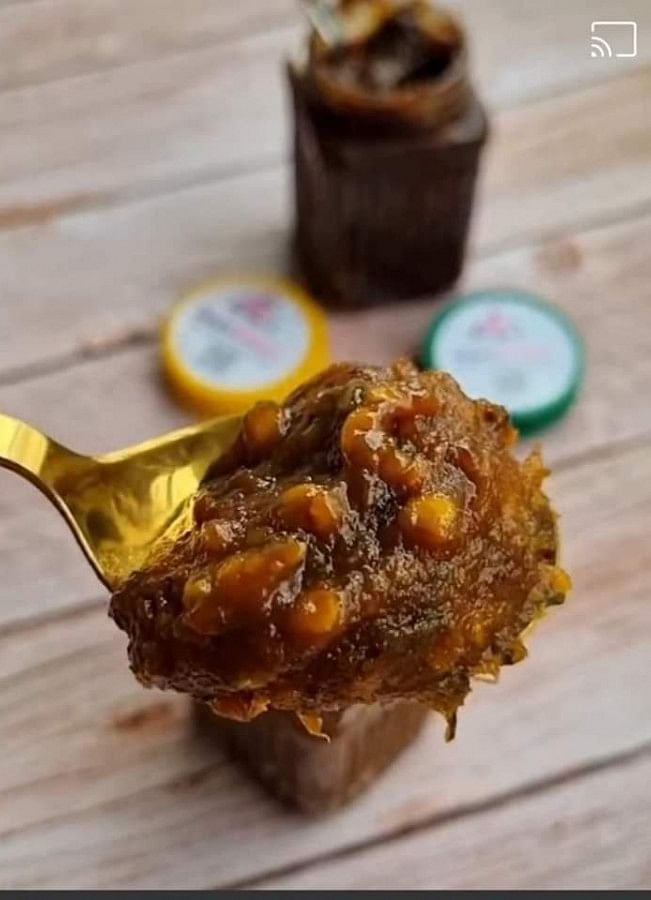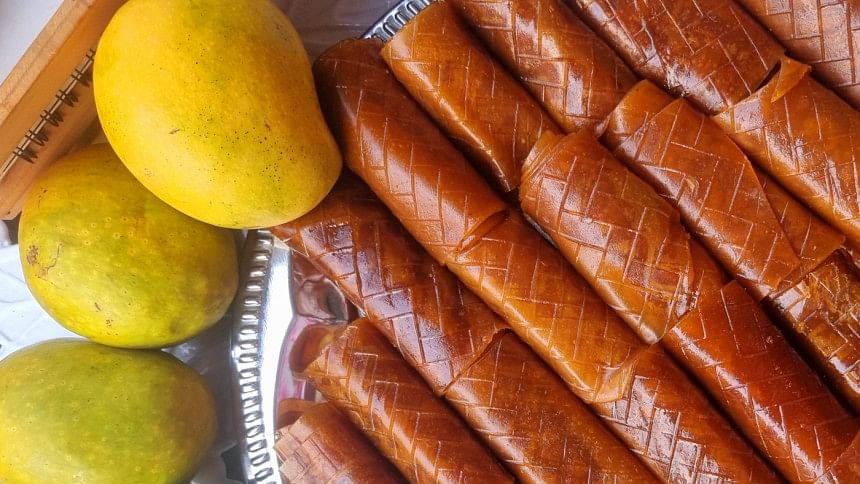For different people, the word achar — the South Asian term for pickles — evokes different memories. Some revel in the memory of seeing their mothers or grandmothers sitting in the courtyards with jars of achar. And for others, the Burmese achar and mango bars stand out in their gallery of recollections. These unique variants — with their perfect blend of sweetness and sourness — were a childhood delight!

Throughout the years, achar has journeyed from the sun-drenched rooftops and kitchens of homes to many platforms — starting with e-commerce marketplaces. Women, who have long been the custodians of this culinary tradition, are now finding online platforms a ripe place for growth and expansion. Laila Parvin Moni — making this traditional delight for 25 to 30 years for her family — has recently been selling achar online through her Facebook page Pickle Tickle BD.
"Making achar has been a cherished tradition in our family for a long time, and my children enjoy my handmade achar very much," shared Moni. Consequently, thanks to the encouragement from her family, Moni started her venture Pickle Tickle BD.

"Taking the step to sell achar online was fuelled by a mix of hope and determination. Our page is new. So, we are still awaiting a noteworthy response from our clients. Nevertheless, the experience has been transformative for me — it has given me a sense of accomplishment," expresses Moni.
Platforms such as Facebook and Instagram have provided many women like Moni with the opportunity to turn their passion and traditional knowledge into thriving businesses. Each jar of achar sold online carries with it a story — of tradition, of family recipes passed down through generations, and of the individual journey of the woman who made it.
Faria Chowdhury of Faria's Delicacy shares her journey from making achar at home to becoming a successful entrepreneur. "I used to make achar before I started my venture. Around seven years ago, I took a job leave and was thinking about doing something worthwhile."
"Then one day, I thought of making the achar of chalta (Elephant apple pickle) and selling it online. Surprisingly, I got a great response from my clients and I never looked back," she reflects. Chowdhury's story exemplifies the spice of digital entrepreneurship, where passion meets opportunity, leading to the birth of promising online ventures.

Chowdhury emphasises the uniqueness of homemade achar, stating, "There is a certain charm about homemade achar. It is not only delicious but also offers a unique flavour that you wouldn't find in packeted achar sold in the markets."
Quite recently, Chowdhury has started offering different fruit bars, which have also been liked by many. She mentions, "I started to make food bars such as mango bars and strawberry bars and my clients have praised them very much!" This allure of homemade achar, coupled with the feasibility of selling online, adds depth and value to the products, engaging customers on a more personal level.
Online platforms have made it easier for small-scale producers and entrepreneurs to sell their products beyond their geographical boundaries — connecting with customers, who seek authentic tastes or a piece of their cultural heritage.

Again, the commercialisation of achar represents a fascinating intersection of tradition and modernity, where age-old recipes meet the dynamics of an expanded marketplace. This transformation from a homemade staple to a commercially viable product has not only broadened the reach of this beloved condiment but has also introduced a variety of challenges and opportunities for producers and consumers alike.
Local brands have tapped into the nostalgic appeal of achar and created a certain appeal among achar lovers — marketing it not just as a food item but as a cultural experience. Perhaps, in future, the commercialisation of achar will continue to grow, fuelled by a growing interest in global cuisines and the diaspora communities longing for a taste of home.
While many cherish the homemade recipes passed down through generations, the availability of commercial achar has made it accessible to those who may not have the means or time to prepare it at home. This balance between tradition and convenience has contributed significantly to its wider appeal.
Nevertheless, as years pass and generations change, the tradition of making and distributing achar might evolve, but the essence remains the same!
The achar, once prepared, has at all times, found its way to every meal and hopefully, will continue to do so — adding zest to the simplest dishes and elevating our celebrations. And for us, the tangy, spicy, and sweet flavours of achar will always be synonymous with home, comfort, and belonging.








Comments